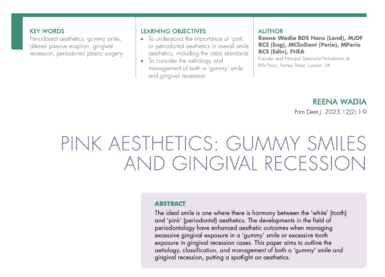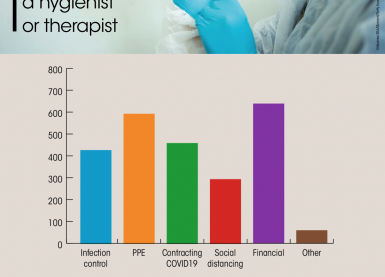Home/Articles
/ General Dental /
Reena’s Notes: TubulesLive with Dr Julian Caplan – The aesthetic CadCam interface using Cerec technology
March 20, 2014

- Restorative dentistry – artistry – conserve tooth structure, retention and resistance, reduce biological consequences, longevity.
- Cerec is the only system for in-surgery restorations introduced by Professor Mormann and Dr Brandestini.
- First chairside Cerec inlay in 1985.
- There are two possibilities with Cerec – laboratory or in-surgery manufacture.
- 2 types of camera – blue cam, which works using triangulation and confocal microscopy allowing a virtual model to be made in seconds. Omnicam incorporates trigangulation, colour and can also can scan 18 frames a second. This latter is easier to use, allows differences to be seen between tooth and gingivae and is more compact.
- Your prep is scanned and this can be emailed to the lab. The technician can then let you know if your margins are clear and can check other requirements. It is possible to rescan any small areas again if required. A model can be created if needed.
- Dental laboratory can make an inlay, onlay or even plan surgery via importing information to create a surgical guide.
- In surgery CadCam utilises the camera to capture an optical impression and the restoration is then milled in 6-7 minutes.
- Cone beam computerised tomography – Cerec and Galileous.
- Ti base – way to restore single implants – simple solution to what could be a complicated procedure.
- Advantages of digital impression – no impression material required (more comfortable, eliminate disadvantages such as problems with expansion/shrinkage), immediate feedback (see if margins clear and if not can rescan area and add to master virtual model), speed (doesn’t take more than 1 – 2 minutes).
- Start off with posterior cases first. This is very important. After a month or so then you can slowly build on anterior cases. When considering aesthetics, need to consider – morphology, restoration colour, adaptation, understand the tooth colour and its affect on the overlying restoration.
- Training is available and should be maximised.
- One of the major advantages of Cerec is the excellent contact points compared with direct restorations.
- Cerec uses Biogenetic software – analysis of thousands of intact occlusal surfaces then transferred to objective algorithms. Uses a mathematical formula to work out what teeth will look like. Can be used for inlays/onlays/crowns/veneers and anatomically sized bridges.
- Biogeneric reference – uses another tooth to decide on tooth morphology.
- Biogeneric individual – uses information from adjacent teeth.
- Biogeneric copy – copies waxup or mockup.
- Steps during it’s use – design margin, define the path of insertion, choose the reference tooth to copy or use a mirror image, proposition, check fit before milling, once placed block and milled can do any surface characterisations.
- Surface characterisations may include simple staining to prevent the restoration from looking monolithic and this is followed by glazing.
- Emax is available as high and low translucency.
- Longevity of CadCam/Cerec restorations is excellent. Studies show survival rate comparable to gold, 89% over 10 years (Sjögren 2004).
- Less than 3-4% of dentists currently using Cerec but this technology seems to be gaining popularity over time.



